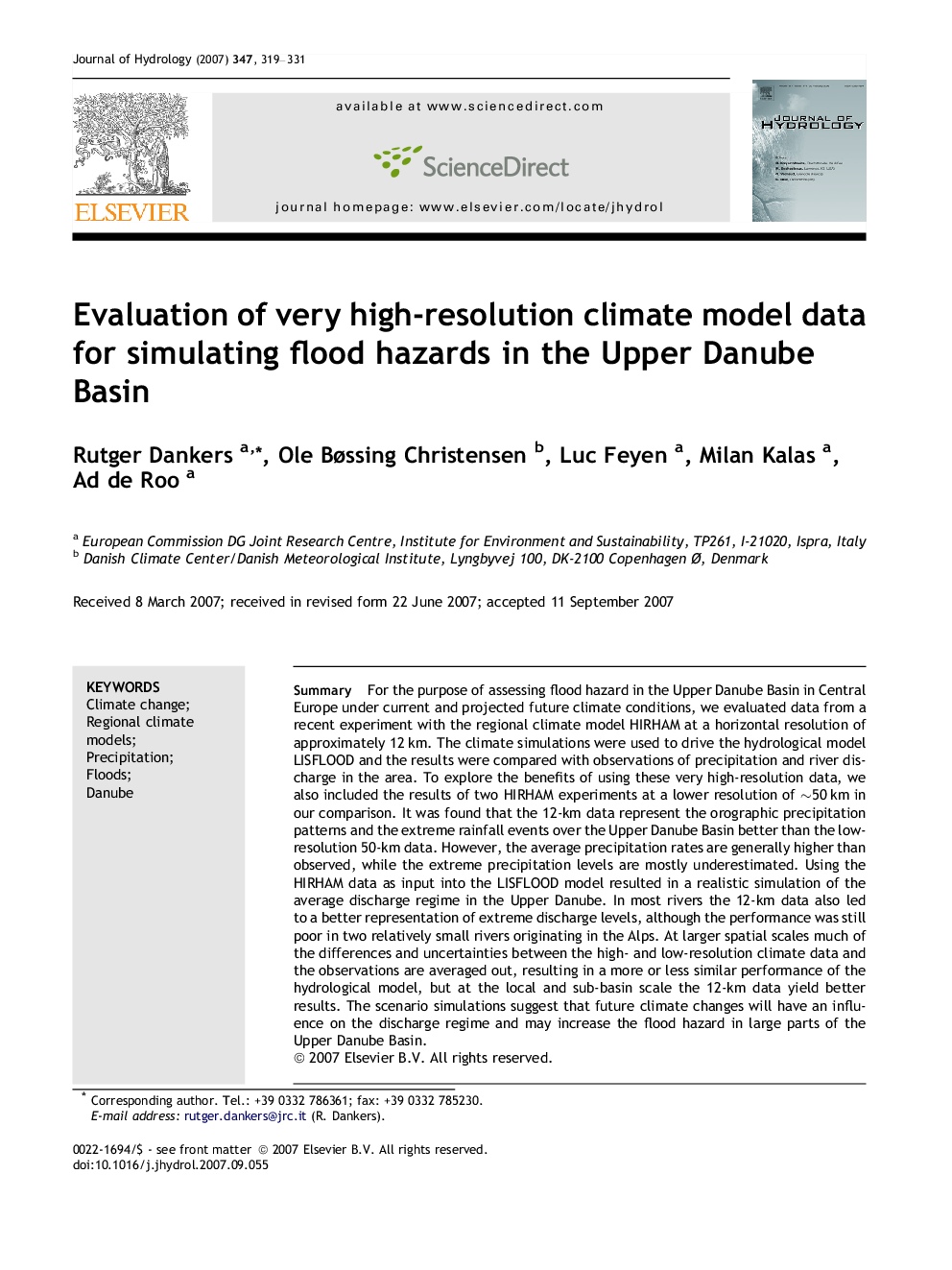| Article ID | Journal | Published Year | Pages | File Type |
|---|---|---|---|---|
| 4579571 | Journal of Hydrology | 2007 | 13 Pages |
SummaryFor the purpose of assessing flood hazard in the Upper Danube Basin in Central Europe under current and projected future climate conditions, we evaluated data from a recent experiment with the regional climate model HIRHAM at a horizontal resolution of approximately 12 km. The climate simulations were used to drive the hydrological model LISFLOOD and the results were compared with observations of precipitation and river discharge in the area. To explore the benefits of using these very high-resolution data, we also included the results of two HIRHAM experiments at a lower resolution of ∼50 km in our comparison. It was found that the 12-km data represent the orographic precipitation patterns and the extreme rainfall events over the Upper Danube Basin better than the low-resolution 50-km data. However, the average precipitation rates are generally higher than observed, while the extreme precipitation levels are mostly underestimated. Using the HIRHAM data as input into the LISFLOOD model resulted in a realistic simulation of the average discharge regime in the Upper Danube. In most rivers the 12-km data also led to a better representation of extreme discharge levels, although the performance was still poor in two relatively small rivers originating in the Alps. At larger spatial scales much of the differences and uncertainties between the high- and low-resolution climate data and the observations are averaged out, resulting in a more or less similar performance of the hydrological model, but at the local and sub-basin scale the 12-km data yield better results. The scenario simulations suggest that future climate changes will have an influence on the discharge regime and may increase the flood hazard in large parts of the Upper Danube Basin.
